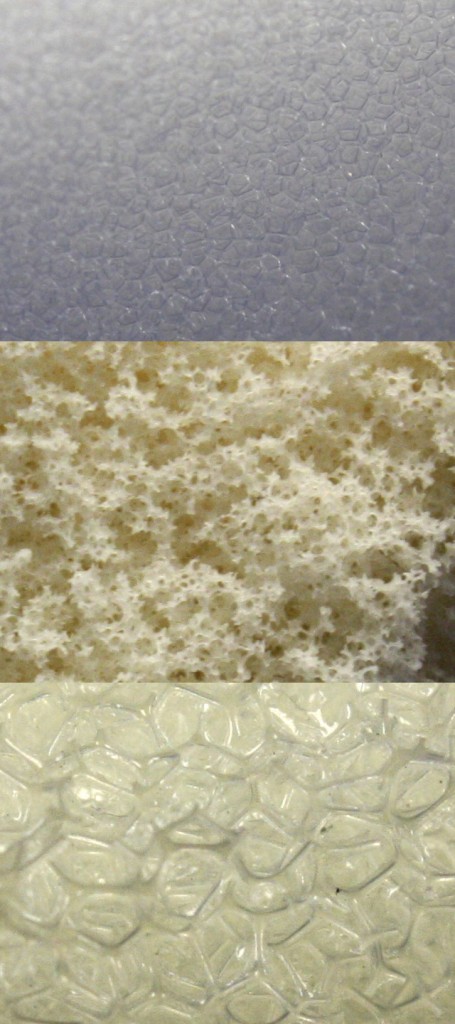As one of the most used materials in the world, you would be hard-pressed to find a person who doesn’t know what you’re talking about when you say the word “foam.” However, what makes this material so interesting is that while everybody knows what foam is, the type of foam someone might think of can greatly vary. One person may picture memory foam or polystyrene just as easily as another would envision neoprene or spongy polyurethane foam.
Of course, no answer is more correct than another, but the diversity of a material so universally recognized does add a degree of potential confusion when dealing with specific materials. Here at Foam Factory, Inc., we wanted to give our customers a more detailed glimpse (literally!) into our line of foam to show some of the characteristics that help define the products you see almost every day.
—
Open-Cell Foam
Traditional polyurethane foams, as a whole, are very similar structurally, offering a recognizably soft and squishy feel. Colors aside, Foam Factory’s memory foam, Lux foam, HD36 foam, charcoal foam, and poly foam varieties are all visually similar, though the compounds used to make the materials and impact their performance may differ – memory foam as a perfect example.

Foam cells, both open and closed, are bubbles of the foam material mix and are expanded with air or gasses. In open-cell foam, these bubbles burst, leaving an interconnected structure called struts. In closed-cell foam sheets, the cells to do not burst, and the surfaces between the struts are called windows, because of their similarity to panes of glass.
Without holding a polyurethane open-cell foam sheet an inch from your eyes, the cellular structure of the material is hard to notice, save for a few of the larger ruptured cells. These cells are smaller than a millimeter in length and are very consistent as a whole. If you were to inspect the cross-section of an open-cell polyurethane foam with a magnifying glass, you would see something that looks like millions of popped bubbles stuck together (See: top image).
Depending on the cutting of the material, some polyurethane open-cell foams have what may be considered a sparkle. These are actually the aforementioned windows that didn’t completely rupture in the foam’s formation. These reflect light, making them noticeable across the form, but compared to the actual number of cells in an open-cell material, are minimal. Over time, these remaining cell walls break down with use, causing the foam to have a flatter, matte appearance.
Latex foam is another open-cell variety, and is similar to polyurethane foam with a few slight differences. Depending on the type of latex, the cells may be slightly larger than those in some polyurethane foams. This, combined with its cream color, gives the material a fluffy appearance, very similar to Angel Food cake (See: middle image). One thing that sets latex foam apart from other open-cell foams is the way it’s made – poured into a pincore mold – and this can be seen in the macro-structure of the material. These metal pins are slightly smaller in diameter than a pencil, and depending on where a cut is made in the foam, the canals left in the material for ventilation may be obvious. They are an important part of the material’s formation however, and should not be considered a defect.
Dryfast foam is the most unique material among Foam Factory’s open-cell varieties. Designed to allow the passage of water and air, the cells of Dryfast are easily identified with the naked eye, even at a distance. Compared to traditional polyurethane foam, these cells are gigantic, with some being as much as 3, 4, or 5 millimeters in diameter. The thin cell struts, juxtaposed against the comparatively large pores almost make Dryfast appear spindly (See: bottom image). Despite that, Dryfast remains strong enough for use in outdoor cushions and marine foam seating, attesting to the resilience of the material.
—
For the next post, click here: A Closer Look at Foam: Part II – Closed-Cell Foam

